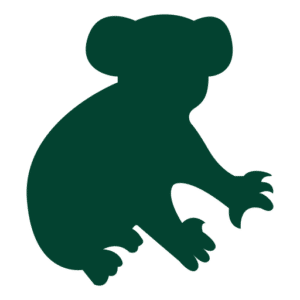Elissa Caldwell is the owner of The Torr, a property situated in Bexhill, approximately 10km northeast of Lismore, New South Wales. The Torr is a dedicated wildlife sanctuary also used for wildlife rehabilitation, education and as an eco-tourism site showcasing best practice in rewilding for native species. The property is also the base for Bexhill Coopers Creek Landcare and is a release site for rehabilitated bandicoots. The Torr is additionally registered with Habitat for Wildlife and Land for Wildlife.
Elissa is planning to revegetate the property to become 95% treed by 2030 based on local pre-clearing data to prevent further land degradation, erosion and land drops. Though there are several horses and ponies on the property, Elissa plans to transition the property to have no hoofed animals on it.
The property covers 2.8 hectares, climbing from riparian flats through eucalypt woodlands, native grasslands, sheoak forests, dry tropical rainforest and dry sclerophyll forests on the ridgetop. Areas of the property provide ideal habitat for pollinators, and the property features birdwing butterfly vines (Pararistolochia praevenosa) and Davidson’s plums (Davidsonia sp.).
The property is an essential refuge and breeding site for koalas, housing 14 koalas (including mothers with joeys) in 2022. The property provides habitat for a range of threatened species including koalas (Phascolarctos cinereus), Richmond birdwing butterflies (Ornithoptera richmondia), powerful owls (Ninox strenua), glossy black-cockatoos (Calyptorhynchus lathami) and Major Mitchell cockatoos (Lophochroa leadbeateri).
Other wildlife found on the property includes bandicoots, microbats, grey-headed flying-foxes (Pteropus poliocephalus), short-beaked echidnas (Tachyglossus aculeatus), spotted-tailed quolls (Dasyurus maculatus), bushrats, swamp wallabies (Wallabia bicolor), eastern grey kangaroos (Macropus giganteus) and native insects including blue-banded bees.
The property is also home to a variety of reptiles including carpet pythons (Morelia spilota), green tree snakes (Dendrelaphis punctulatus), common death adders (Acanthophis antarcticus), tiger snakes (Notechis scutatus), brown tree snakes (Boiga irregularis), keelbacks (Tropidonophis mairii), eastern brown snakes (Pseudonaja textilis), small-eyed snakes (Cryptophis nigrescens), red-bellied black snakes (Pseudechis porphyriacus) and lace monitors (Varanus varius).
Birdlife is abundant and includes yellow (Zanda funerea) and red-tailed (Calyptorhynchus banksii) black cockatoos, tawny frogmouths (Podargus strigoides), laughing kookaburras (Dacelo novaeguineae), goshawks, nankeen kestrels (Falco cenchroides), wedge-tailed eagles (Aquila audax), white-bellied sea eagles (Haliaeetus leucogaster), barn owls (Tyto alba), brush turkeys (Alectura lathami), ravens (Corvus coronoides), crows (Corvus orru), quails, rainbow lorikeets (Trichoglossus moluccanus), finches, wrens and various honeyeaters and waterbirds.





